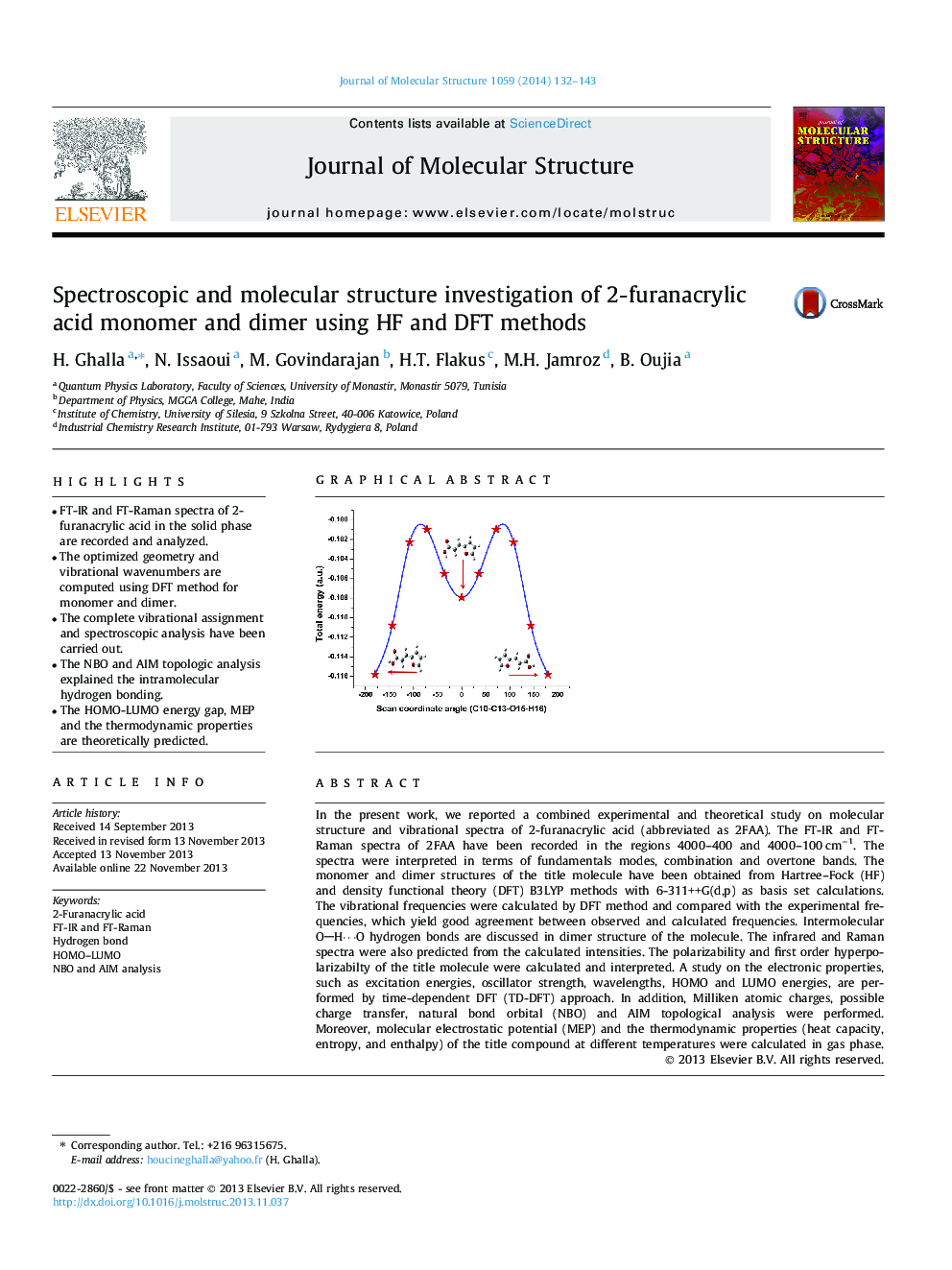| Article ID | Journal | Published Year | Pages | File Type |
|---|---|---|---|---|
| 1405704 | Journal of Molecular Structure | 2014 | 12 Pages |
•FT-IR and FT-Raman spectra of 2-furanacrylic acid in the solid phase are recorded and analyzed.•The optimized geometry and vibrational wavenumbers are computed using DFT method for monomer and dimer.•The complete vibrational assignment and spectroscopic analysis have been carried out.•The NBO and AIM topologic analysis explained the intramolecular hydrogen bonding.•The HOMO-LUMO energy gap, MEP and the thermodynamic properties are theoretically predicted.
In the present work, we reported a combined experimental and theoretical study on molecular structure and vibrational spectra of 2-furanacrylic acid (abbreviated as 2FAA). The FT-IR and FT-Raman spectra of 2FAA have been recorded in the regions 4000–400 and 4000–100 cm−1. The spectra were interpreted in terms of fundamentals modes, combination and overtone bands. The monomer and dimer structures of the title molecule have been obtained from Hartree–Fock (HF) and density functional theory (DFT) B3LYP methods with 6-311++G(d,p) as basis set calculations. The vibrational frequencies were calculated by DFT method and compared with the experimental frequencies, which yield good agreement between observed and calculated frequencies. Intermolecular OH⋯O hydrogen bonds are discussed in dimer structure of the molecule. The infrared and Raman spectra were also predicted from the calculated intensities. The polarizability and first order hyperpolarizabilty of the title molecule were calculated and interpreted. A study on the electronic properties, such as excitation energies, oscillator strength, wavelengths, HOMO and LUMO energies, are performed by time-dependent DFT (TD-DFT) approach. In addition, Milliken atomic charges, possible charge transfer, natural bond orbital (NBO) and AIM topological analysis were performed. Moreover, molecular electrostatic potential (MEP) and the thermodynamic properties (heat capacity, entropy, and enthalpy) of the title compound at different temperatures were calculated in gas phase.
Graphical abstractFigure optionsDownload full-size imageDownload as PowerPoint slide
